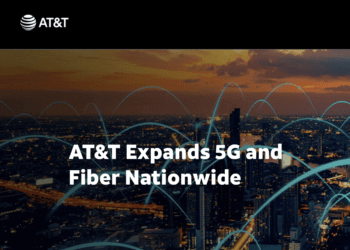AT&T has invested more than $140 billion primarily in its U.S. wireless and wireline network over the past 5 years (2018–2022), including capital investments and acquisitions of wireless spectrum.
The carrier reported the following network milestones:
- The AT&T mobile network now covers more than 2.91 million square miles, an increase of about 100,000 square miles in 2022. This represents a population coverage of 290 million people.
- AT&T has increased coverage by more than 40% on federally recognized tribal lands in the last 2 years (2020 – 2022) thanks to public-private partnerships like FirstNet and those created through the American Rescue Plan.
- As of the end of 2022, more than 150 million people could take advantage of AT&T's mid-band 5G spectrum – more than double the company's original end-of-year 2022 target.
- AT&T has doubled the number of venues and airports with AT&T 5G+ last year to now bring super-fast speeds and increased connectivity to parts of more than 50 cities and nearly 70 venues and airports in the U.S.
- FirstNet already covers 99%+ of the U.S. population, covering more first responders than any network.
- AT&T has now surpassed 99%+ of its Band 14 coverage target with the First Responder Network Authority (FirstNet Authority), delivering more dedicated connectivity to federal, state, tribal, territorial, urban and rural first responders when they need it.
- In 2022, AT&T laid more than 60,000 miles of fiber in the U.S. alone.
- The fiber network is carrying more than 594 petabytes of data traffic on an average day, up 23% year-over-year (or the equivalent of streaming nearly 40 million 2-hour long movies in HD).
- Currently, AT&T Fiber has passed 24 million locations – including 4 million business locations – in 100+ U.S. metros – that's on track to pass 30+ million locations by the end of 2025.
- AT&T also highlighted its efforts to establish a 3rd "emergency" pathway to each mobility network hub (MTSO) to combat extreme weather and climate events as well as increasing instabilities in the commercial power infrastructure landscape. This reduces the likelihood of major outages by nearly 35%.










